|
|
|
A
B
C
D
E
F
G
H
I
J
K
L
M
N
O
P
Q
R
S
T
U
V
W
X
Y
Z
About Appellations Bibliographies Calendars Chronology Contact Diacritic Guide Houses of Worship Numbers Pronunciation Guide Site Map |
| Eighth Bahá'í House of Worship - Continental Bahapur, New Delhi, India, Indian Sub-Continent Mother Temple of the Indian Subcontinent |
| << Previous - Seventh Bahá'í House of Worship | Ninth Bahá'í House of Worship - Next >> |
| TOP | |||||||||||||||||||||
| Description 1 | |||||||||||||||||||||
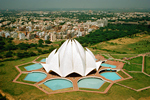 The Bahá'í House of Worship is dedicated to the oneness of humanity and religion. It also displays in symbol and action the unity of mankind – the pivotal principle of the Bahá'í Faith. People from all religious backgrounds are welcome here. Each Bahá'í House of Worship will become a centre for social, scientific, educational and humanitarian services, living up to its title of "Dawning Place of the Remembrance of God." The Bahá'í House of Worship is dedicated to the oneness of humanity and religion. It also displays in symbol and action the unity of mankind – the pivotal principle of the Bahá'í Faith. People from all religious backgrounds are welcome here. Each Bahá'í House of Worship will become a centre for social, scientific, educational and humanitarian services, living up to its title of "Dawning Place of the Remembrance of God." |
|||||||||||||||||||||
| Since its inauguration to public worship and visits in December 1986, the Bahá’í House of Worship in New Delhi, India has drawn to its portals more than 70 million visitors from across the globe. The House of Worship for the Indian subcontinent welcomes on average of over ten thousand visitors every day, and features prominently in publications, films and television productions. These visitors have admired its universal design in the form of the lotus flower and have been fascinated by the Teachings of the Bahá’í Faith, especially its tenets of the Oneness of God, the Oneness of Religions, and the Oneness of Mankind. | |||||||||||||||||||||
The India Bahá’í House of Worship joins seven other Bahá’í Houses of Worship around the world: Apia, Western Samoa; Sydney, Australia; Kampala, Uganda; Panama City, Panama; Frankfurt, Germany; Wilmette, USA; Santiago,Chile. It is an offering by the Baha’i World to humanity solely designed and entirely dedicated to the worship of God . To promote unity through free participation in acts of worship and service in a serene atmosphere devoid of rituals or ceremonies. |
|||||||||||||||||||||
| [ The Bahá'í House of Worship - New Delhi, India ] | |||||||||||||||||||||
| TOP | |||||||||||||||||||||
| Description 2 | |||||||||||||||||||||
| The Baháʼí temple in Delhi, India was dedicated in December 1986, having been completed for a total cost $10 million. It serves as the Mother Temple of the Indian subcontinent. It has won numerous architectural awards and been featured in many newspaper and magazine articles. The architect was an Iranian, who now lives in Canada, named Fariborz Sahba | |||||||||||||||||||||
| Inspired by the lotus flower, its design is composed of 27 free-standing, marble-clad "petals" arranged in clusters of three to form nine sides. | |||||||||||||||||||||
| Nine doors open on to a central hall, capable of holding up to 2,500 people. Slightly more than 40 meters tall, its surface shining white marble, the temple at times seems to float above its 26-acre (105,000 m2; 10.5 ha) nine surrounding ponds. The site is in the village of Bahapur, in the National Capital Territory of Delhi. The major part of the funds needed to buy this land was donated by Ardishír Rustampúr from Hyderabad, who gave his entire life savings for this purpose in 1953. | |||||||||||||||||||||
| This House of Worship is generally referred to as the "Lotus Temple" by Baháʼís and non-Baháʼís alike. In India, during the Hindu festival Durga Puja, several times a replica of the Lotus Temple has been made as a pandal, a temporary structure set up to venerate the goddess Durga. | |||||||||||||||||||||
| [ Wikipedia - Bahá'í House of Worship ] | |||||||||||||||||||||
| TOP | |||||||||||||||||||||
| Lotus Temple | |||||||||||||||||||||
| The Lotus Temple, located in Delhi, India, is a Baháʼí House of Worship that was dedicated in December 1986.Notable for its flowerlike shape, it has become a prominent attraction in the city. Like all Baháʼí Houses of Worship, the Lotus Temple is open to all, regardless of religion or any other qualification. The building is composed of 27 free-standing marble-clad "petals" arranged in clusters of three to form nine sides, with nine doors opening onto a central hall with a height of slightly over 34.27 metres and a capacity of 2,500 people. The Lotus Temple has won numerous architectural awards and has been featured in many newspaper and magazine articles. A 2001 CNN report referred to it as the most visited building in the world. | |||||||||||||||||||||
| [ Wikipedia - Lotus Temple ] | |||||||||||||||||||||
| TOP | |||||||||||||||||||||
| Worship | |||||||||||||||||||||
| The Baháʼí Faith teaches that a Baháʼí House of Worship should be a space for people of all religions to gather, reflect, and worship. Anyone may enter the Lotus Temple irrespective of religious background, sex, or other distinctions, as is the case with all Baháʼí houses of worship. The sacred writings of not only the Baháʼí faith but also other religions can be read and/or chanted, regardless of language; on the other hand, reading nonscriptural texts is forbidden, as are delivering sermons or lectures, or fund-raising. Musical renditions of readings and prayers can be sung by choirs, but no musical instruments can be played inside. There is no set pattern for worship services, and ritualistic ceremonies are not permitted. | |||||||||||||||||||||
| [ Wikipedia - Lotus Temple ] | |||||||||||||||||||||
| TOP | |||||||||||||||||||||
| Structure | |||||||||||||||||||||
| All Baháʼí Houses of Worship, including the Lotus Temple, share certain architectural elements, some of which are specified by Baháʼí scripture. ʻAbdu'l-Bahá, the son of the founder of the religion, stipulated that an essential architectural character of a House of Worship is a nine-sided circular shape. While all current Baháʼí Houses of Worship have a dome, this is not regarded as an essential part of their architecture. Baháʼí scripture also states that no pictures, statues or images be displayed within the House of Worship and no pulpits or altars be incorporated as an architectural feature (readers may stand behind simple portable lecture stands). | |||||||||||||||||||||
| Inspired by the lotus flower, the design for the House of Worship in New Delhi is composed of 27 free-standing marble-clad "petals" arranged in clusters of three to form nine sides. The nine doors of the Lotus Temple open onto a central hall slightly more than 40 metres tall that can seat 1,300 people and hold up to 2,500 in all. The surface of the House of Worship is made of white marble from Penteli mountain in Greece, the same marble used in the construction of many ancient monuments (including the Parthenon) and other Baháʼí buildings. Along with its nine surrounding ponds and gardens, the Lotus Temple property comprises 26 acres (105,000 m²; 10.5 ha). | |||||||||||||||||||||
| Lotus temple is situated near Okhla NSIC and Kalkaji Mandir metro station is just 500 meters away. | |||||||||||||||||||||
| The temple is located in the village of Bahapur in New Delhi, National Capital Territory of Delhi. The architect was an Iranian, Fariborz Sahba who now lives in La Jolla, California, after living some years in Canada. He was approached in 1976 to design the Lotus Temple and later oversaw its construction. The structural design was undertaken by the UK firm Flint and Neill over the course of 18 months, and the construction was done by ECC Construction Group of Larsen & Toubro Limited at a cost of $10 million. The major part of the funds needed to buy this land was donated by Ardishír Rustampúr of Hyderabad, Sindh, who gave his entire life savings for this purpose in 1953. A portion of the construction budget was saved and used to build a greenhouse to study indigenous plants and flowers that would be appropriate for use on the site. | |||||||||||||||||||||
| Of the temple's total electricity use of 500 kilowatts (kW), 120 kW is provided by solar power generated by solar panels on the building. This saves the temple 120,000 rupees per month. It is the first temple in Delhi to use solar power. | |||||||||||||||||||||
| [ Wikipedia - Lotus Temple ] | |||||||||||||||||||||
| TOP | |||||||||||||||||||||
| Tourism | |||||||||||||||||||||
| The Baháʼí House of Worship in Delhi was opened to public worship in December 1986. By late 2001, it had attracted more than 70 million visitors, making it one of the most visited buildings in the world. According to the government of India, it had received over 100 million visitors by April 2014. | |||||||||||||||||||||
| [ Wikipedia - Lotus Temple ] | |||||||||||||||||||||
| TOP | |||||||||||||||||||||
| Distinctions | |||||||||||||||||||||
| The Temple has received a wide range of attention in professional architectural, fine art, religious, governmental, and other venues. | |||||||||||||||||||||
| [ Wikipedia - Lotus Temple ] | |||||||||||||||||||||
| TOP | |||||||||||||||||||||
| Location | |||||||||||||||||||||
| Lotus Temple लोटस मंदिर Temple with a flower-like design Lotus Temple Road, Bahapur, Shambhu Dayal Bagh, Kalkaji, New Delhi, Delhi 110019, India |
|||||||||||||||||||||
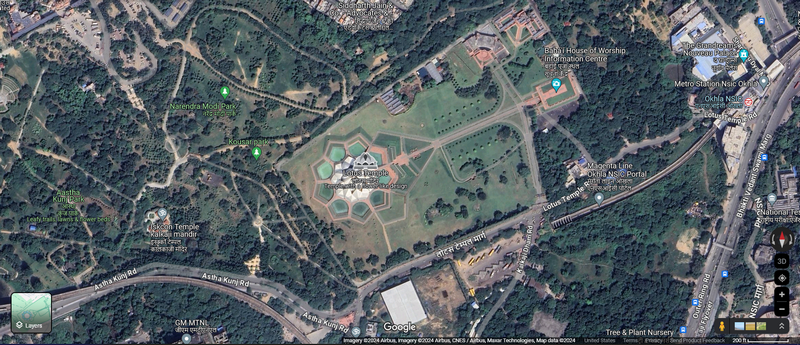 |
|||||||||||||||||||||
| Lotus Temple लोटस मंदिर Temple with a flower-like design |
|||||||||||||||||||||
| [ |
|||||||||||||||||||||
| TOP | |||||||||||||||||||||
| See Also: | |||||||||||||||||||||
| TOP | |||||||||||||||||||||
| Eighth Bahá'í House of Worship - Continental Bahapur, New Delhi, India, Indian Sub-Continent Mother Temple of the Indian Subcontinent - Photographs |
|||||||||||||||||||||
|
|||||||||||||||||||||
| For photo source and copyright information, please click on the little camera [ |
|||||||||||||||||||||
| TOP | |||||||||||||||||||||
| Eighth Bahá'í House of Worship - Continental Bahapur, New Delhi, India, Indian Sub-Continent Mother Temple of the Indian Subcontinent - Photograph #1 |
|||||||||||||||||||||
 |
|||||||||||||||||||||
| Continental Bahá’í House of Worship of the Indian Subcontinent (New Delhi, India) and surrounding gardens and pools | |||||||||||||||||||||
| [ View Full Size Image #1 ] [ |
|||||||||||||||||||||
| Eighth Bahá'í House of Worship - Continental Bahapur, New Delhi, India, Indian Sub-Continent Mother Temple of the Indian Subcontinent - Photograph #2 |
|||||||||||||||||||||
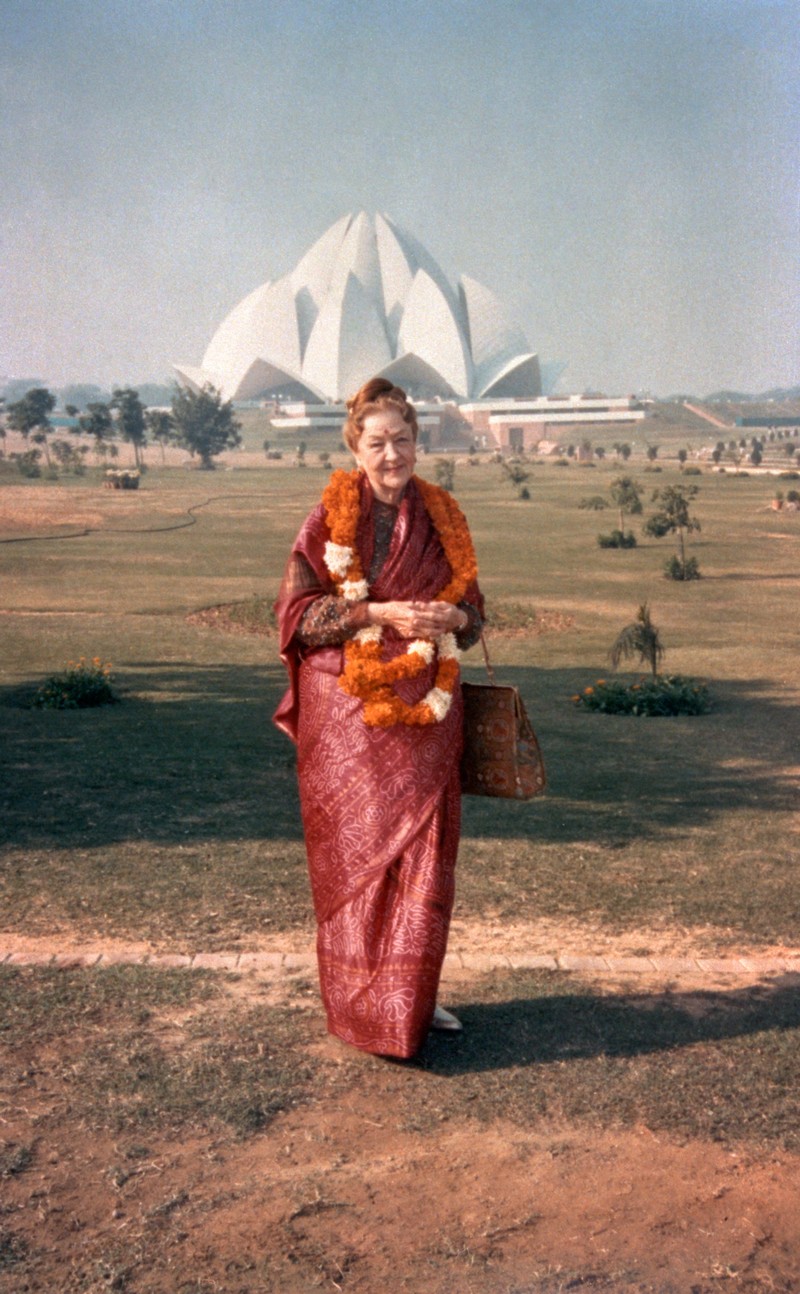 |
|||||||||||||||||||||
| Hand of the Cause Amatu’l-Bahá Rúhíyyih Khánum at the Dedication of the Continental House of Worship of the Indian Subcontinent (New Delhi, India), December 1986 | |||||||||||||||||||||
| [ View Full Size Image #2 ] [ |
|||||||||||||||||||||
| Eighth Bahá'í House of Worship - Continental Bahapur, New Delhi, India, Indian Sub-Continent Mother Temple of the Indian Subcontinent - Photograph #3 |
|||||||||||||||||||||
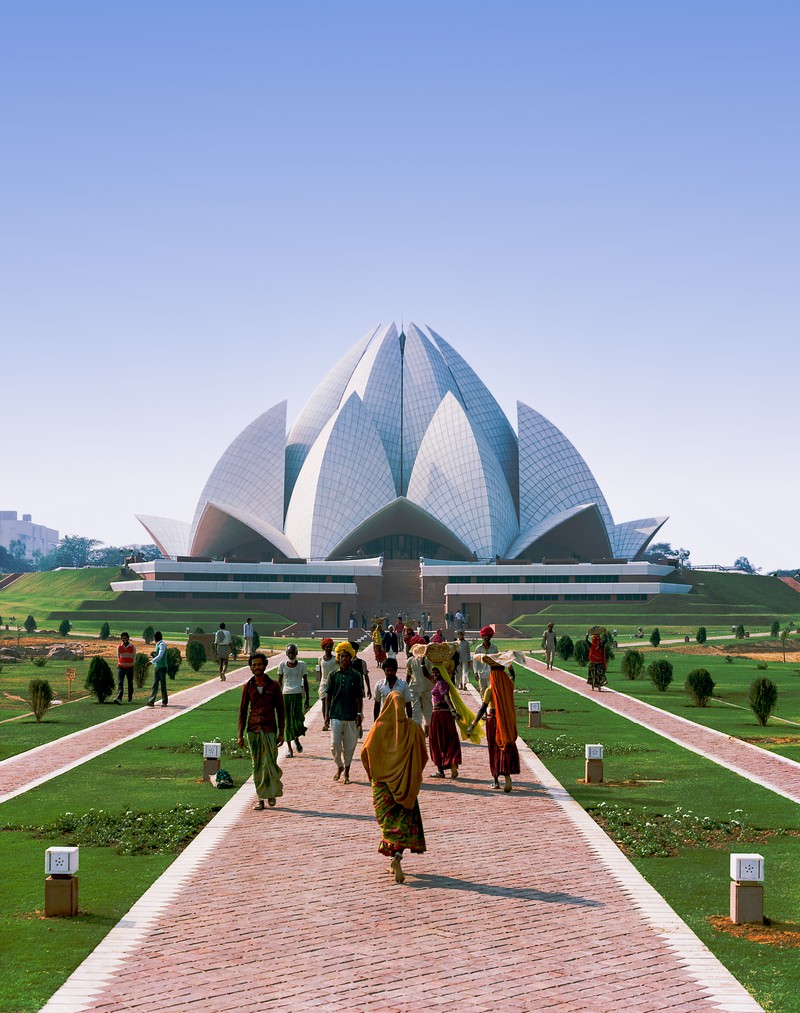 |
|||||||||||||||||||||
| Visitors approaching the Continental Bahá’í House of Worship of the Indian Subcontinent (New Delhi, India) | |||||||||||||||||||||
| [ View Full Size Image #3 ] [ |
|||||||||||||||||||||
| Eighth Bahá'í House of Worship - Continental Bahapur, New Delhi, India, Indian Sub-Continent Mother Temple of the Indian Subcontinent - Photograph #4 |
|||||||||||||||||||||
 |
|||||||||||||||||||||
| Visitors approaching the Continental Bahá’í House of Worship of the Indian Subcontinent (New Delhi, India), 1995 | |||||||||||||||||||||
| [ View Full Size Image #4 ] [ |
|||||||||||||||||||||
| Eighth Bahá'í House of Worship - Continental Bahapur, New Delhi, India, Indian Sub-Continent Mother Temple of the Indian Subcontinent - Photograph #5 |
|||||||||||||||||||||
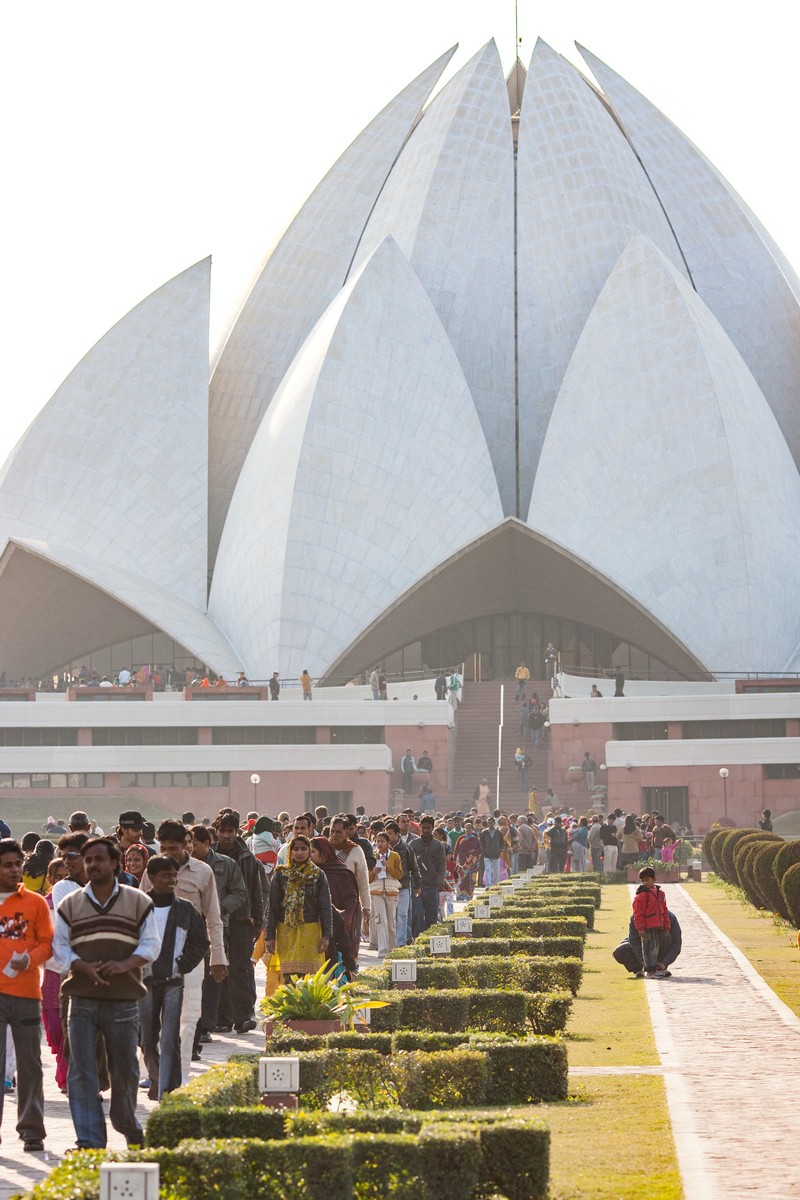 |
|||||||||||||||||||||
| Visitors on the grounds of the Continental Bahá’í House of Worship of the Indian Subcontinent (New Delhi, India) | |||||||||||||||||||||
| [ View Full Size Image #5 ] [ |
|||||||||||||||||||||
| Eighth Bahá'í House of Worship - Continental Bahapur, New Delhi, India, Indian Sub-Continent Mother Temple of the Indian Subcontinent - Photograph #6 |
|||||||||||||||||||||
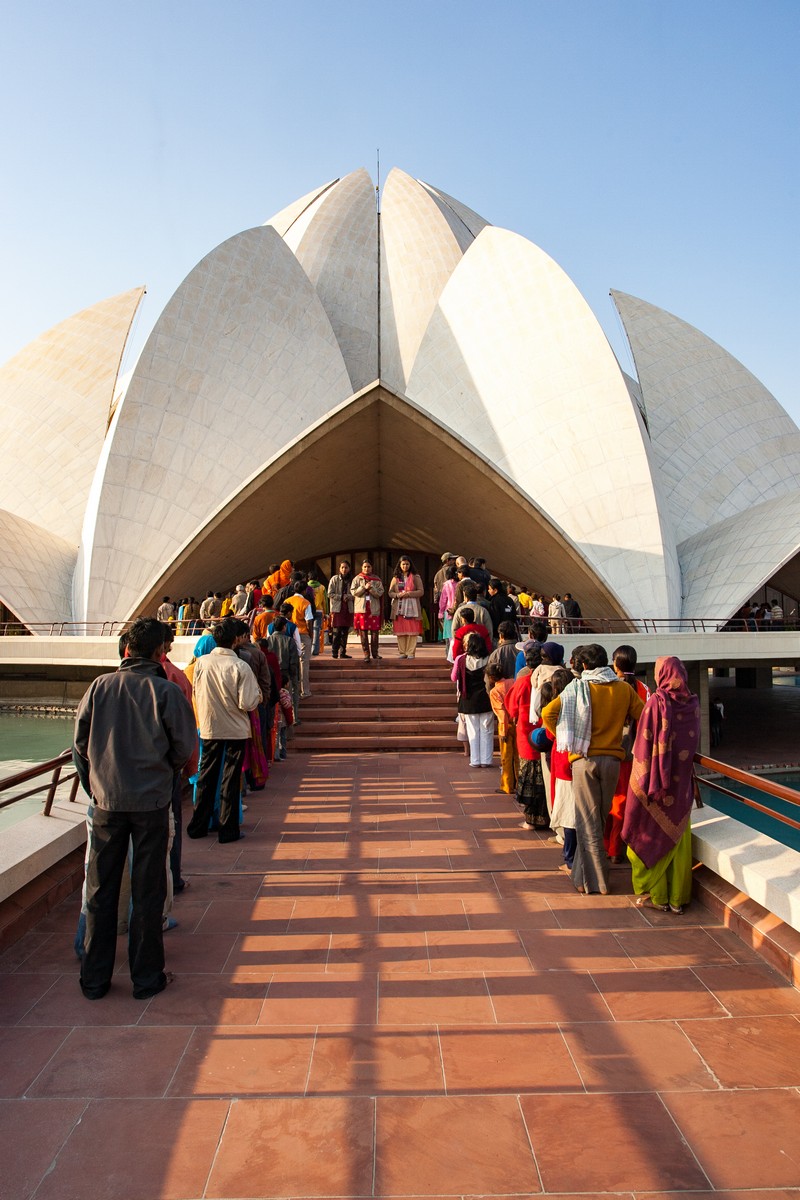 |
|||||||||||||||||||||
| Visitors approaching the entrance to the Continental Bahá’í House of Worship of the Indian Subcontinent (New Delhi, India) | |||||||||||||||||||||
| [ View Full Size Image #6 ] [ |
|||||||||||||||||||||
| Eighth Bahá'í House of Worship - Continental Bahapur, New Delhi, India, Indian Sub-Continent Mother Temple of the Indian Subcontinent - Photograph #7 |
|||||||||||||||||||||
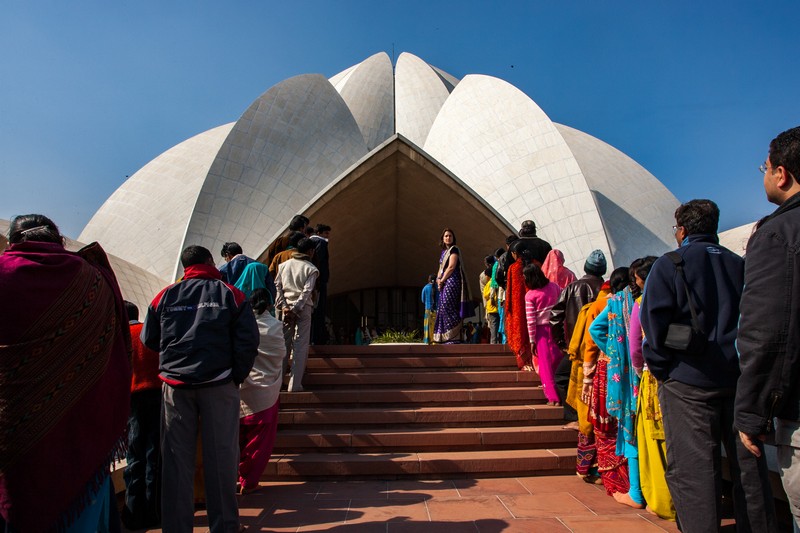 |
|||||||||||||||||||||
| Visitors approaching the entrance to the Continental Bahá’í House of Worship of the Indian Subcontinent (New Delhi, India) | |||||||||||||||||||||
| [ View Full Size Image #7 ] [ |
|||||||||||||||||||||
| Eighth Bahá'í House of Worship - Continental Bahapur, New Delhi, India, Indian Sub-Continent Mother Temple of the Indian Subcontinent - Photograph #8 |
|||||||||||||||||||||
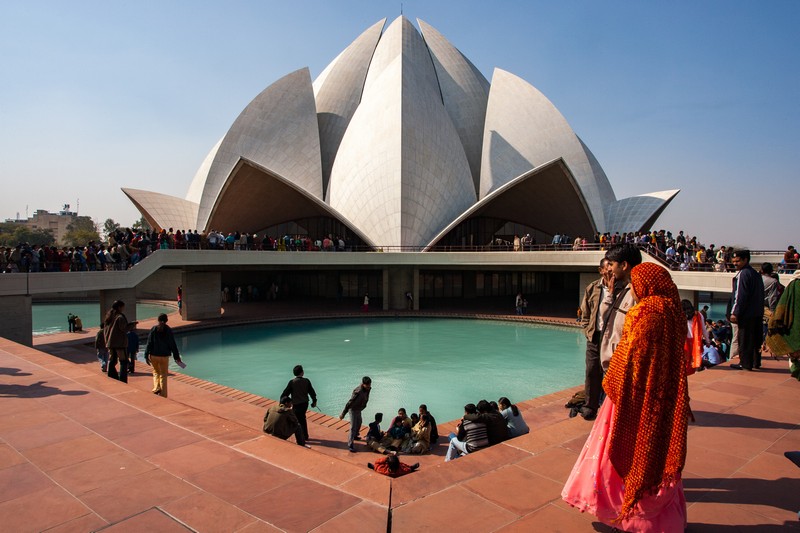 |
|||||||||||||||||||||
| Visitors on the grounds of the Continental Bahá’í House of Worship of the Indian Subcontinent (New Delhi, India) | |||||||||||||||||||||
| [ View Full Size Image #8 ] [ |
|||||||||||||||||||||
| Eighth Bahá'í House of Worship - Continental Bahapur, New Delhi, India, Indian Sub-Continent Mother Temple of the Indian Subcontinent - Photograph #9 |
|||||||||||||||||||||
 |
|||||||||||||||||||||
| Visitors on the grounds of the Continental Bahá’í House of Worship of the Indian Subcontinent (New Delhi, India) | |||||||||||||||||||||
| [ View Full Size Image #9 ] [ |
|||||||||||||||||||||
| Eighth Bahá'í House of Worship - Continental Bahapur, New Delhi, India, Indian Sub-Continent Mother Temple of the Indian Subcontinent - Photograph #10 |
|||||||||||||||||||||
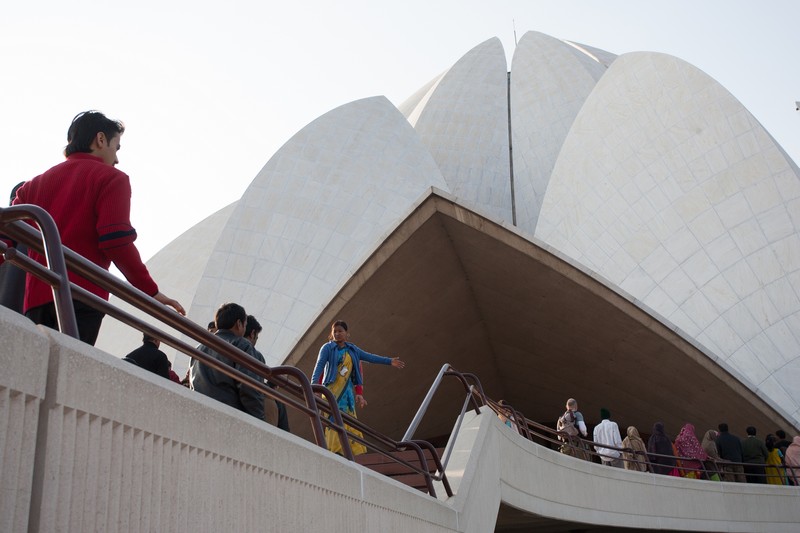 |
|||||||||||||||||||||
| Visitors approaching the entrance to the Continental Bahá’í House of Worship of the Indian Subcontinent (New Delhi, India) | |||||||||||||||||||||
| [ View Full Size Image #10 ] [ |
|||||||||||||||||||||
| Eighth Bahá'í House of Worship - Continental Bahapur, New Delhi, India, Indian Sub-Continent Mother Temple of the Indian Subcontinent - Photograph #11 |
|||||||||||||||||||||
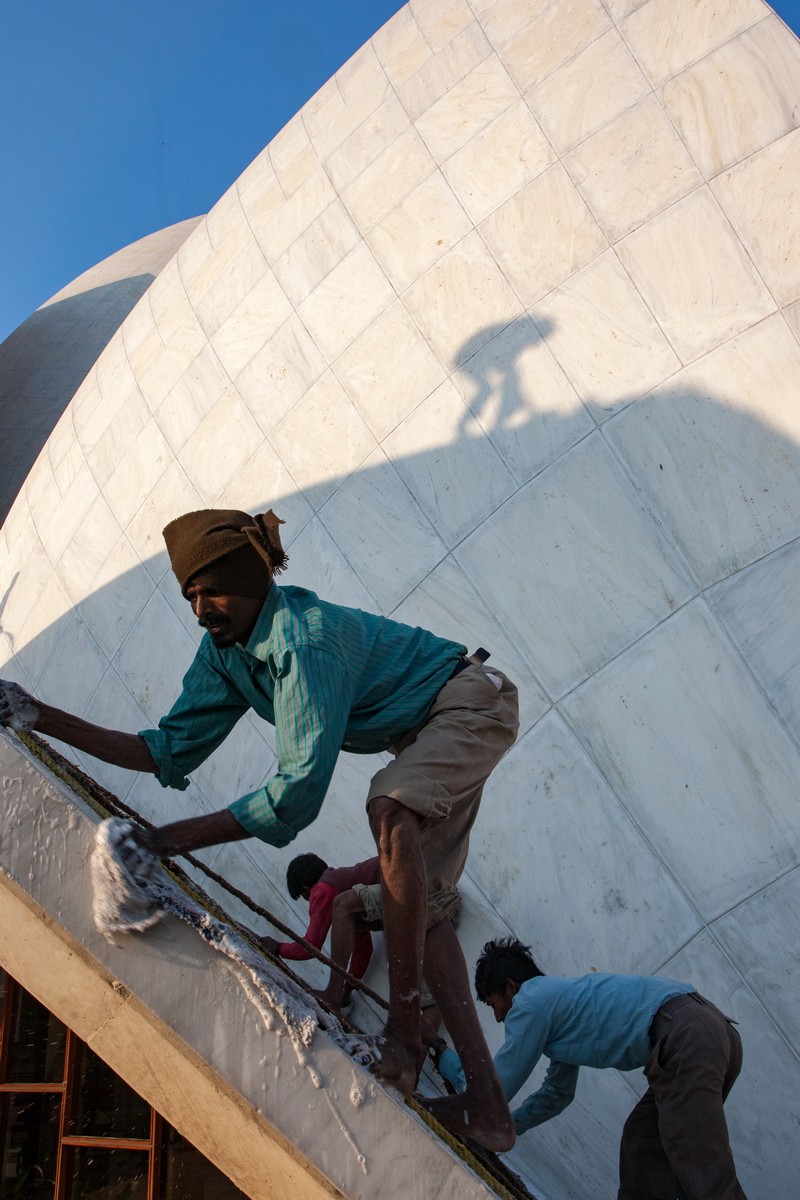 |
|||||||||||||||||||||
| Cleaning the marble-clad petals of the Continental Bahá’í House of Worship of the Indian Subcontinent (New Delhi, India) | |||||||||||||||||||||
| [ View Full Size Image #11 ] [ |
|||||||||||||||||||||
| Eighth Bahá'í House of Worship - Continental Bahapur, New Delhi, India, Indian Sub-Continent Mother Temple of the Indian Subcontinent - Photograph #12 |
|||||||||||||||||||||
 |
|||||||||||||||||||||
| Continental Bahá’í House of Worship of the Indian Subcontinent (New Delhi, India) | |||||||||||||||||||||
| [ View Full Size Image #12 ] [ |
|||||||||||||||||||||
| Eighth Bahá'í House of Worship - Continental Bahapur, New Delhi, India, Indian Sub-Continent Mother Temple of the Indian Subcontinent - Photograph #13 |
|||||||||||||||||||||
 |
|||||||||||||||||||||
| Marble-clad petal detail from the Continental Bahá’í House of Worship of the Indian Subcontinent (New Delhi, India) | |||||||||||||||||||||
| [ View Full Size Image #13 ] [ |
|||||||||||||||||||||
| Eighth Bahá'í House of Worship - Continental Bahapur, New Delhi, India, Indian Sub-Continent Mother Temple of the Indian Subcontinent - Photograph #14 |
|||||||||||||||||||||
 |
|||||||||||||||||||||
| Marble-clad petal detail from the Continental Bahá’í House of Worship of the Indian Subcontinent (New Delhi, India) | |||||||||||||||||||||
| [ View Full Size Image #14 ] [ |
|||||||||||||||||||||
| Eighth Bahá'í House of Worship - Continental Bahapur, New Delhi, India, Indian Sub-Continent Mother Temple of the Indian Subcontinent - Photograph #15 |
|||||||||||||||||||||
 |
|||||||||||||||||||||
| Continental Bahá’í House of Worship of the Indian Subcontinent (New Delhi, India) and surrounding gardens | |||||||||||||||||||||
| [ View Full Size Image #15 ] [ |
|||||||||||||||||||||
| Eighth Bahá'í House of Worship - Continental Bahapur, New Delhi, India, Indian Sub-Continent Mother Temple of the Indian Subcontinent - Photograph #16 |
|||||||||||||||||||||
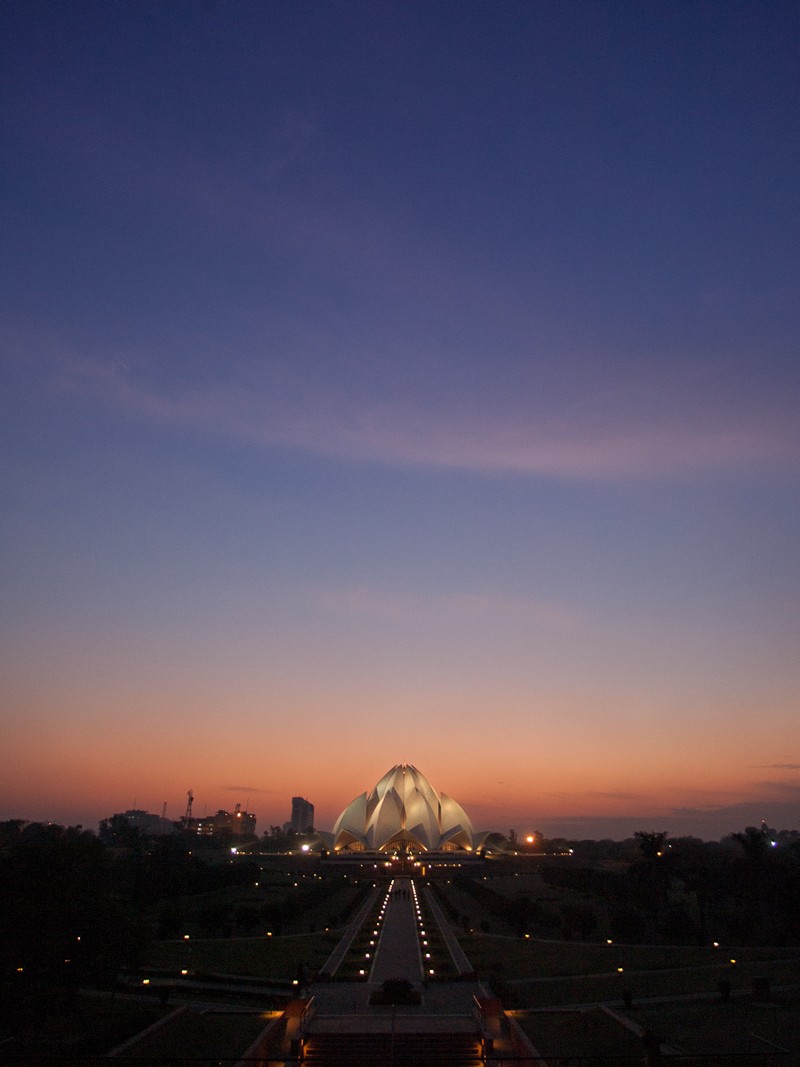 |
|||||||||||||||||||||
| Continental Bahá’í House of Worship of the Indian Subcontinent (New Delhi, India) | |||||||||||||||||||||
| [ View Full Size Image #16 ] [ |
|||||||||||||||||||||
| Eighth Bahá'í House of Worship - Continental Bahapur, New Delhi, India, Indian Sub-Continent Mother Temple of the Indian Subcontinent - Photograph #17 |
|||||||||||||||||||||
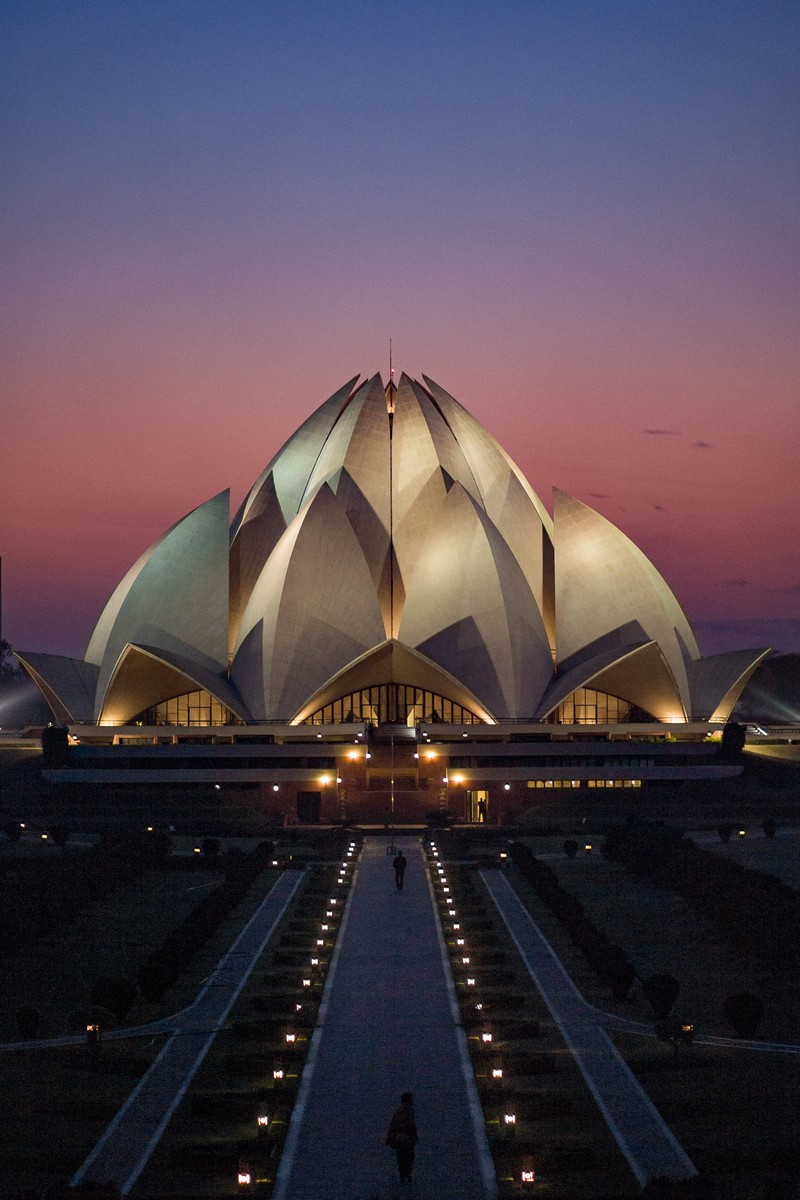 |
|||||||||||||||||||||
| Continental Bahá’í House of Worship of the Indian Subcontinent (New Delhi, India) | |||||||||||||||||||||
| [ View Full Size Image #17 ] [ |
|||||||||||||||||||||
| Eighth Bahá'í House of Worship - Continental Bahapur, New Delhi, India, Indian Sub-Continent Mother Temple of the Indian Subcontinent - Photograph #18 |
|||||||||||||||||||||
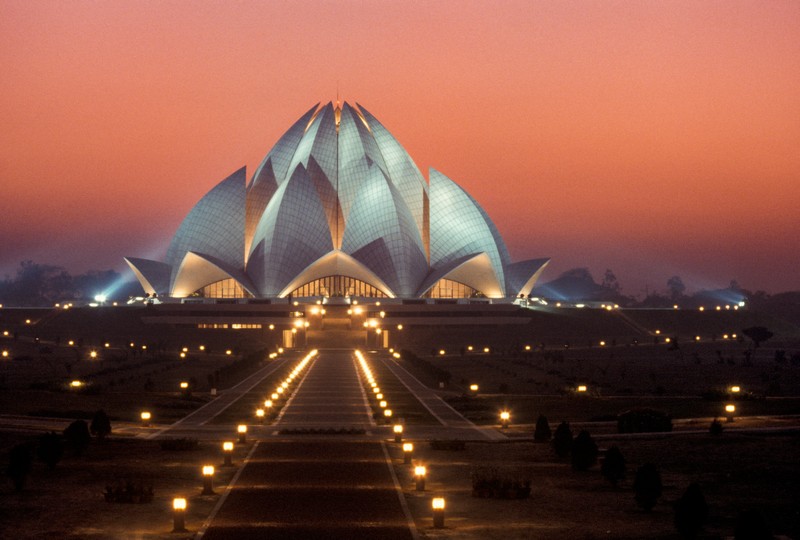 |
|||||||||||||||||||||
| Continental Bahá’í House of Worship of the Indian Subcontinent (New Delhi, India), December 1986 | |||||||||||||||||||||
| [ View Full Size Image #18 ] [ |
|||||||||||||||||||||
| Eighth Bahá'í House of Worship - Continental Bahapur, New Delhi, India, Indian Sub-Continent Mother Temple of the Indian Subcontinent - Photograph #19 |
|||||||||||||||||||||
 |
|||||||||||||||||||||
| Model of the temple at the information centre | |||||||||||||||||||||
| [ View Full Size Image #19 ] [ |
|||||||||||||||||||||
| Eighth Bahá'í House of Worship - Continental Bahapur, New Delhi, India, Indian Sub-Continent Mother Temple of the Indian Subcontinent - Photograph #20 |
|||||||||||||||||||||
 |
|||||||||||||||||||||
| Interior of Lotus temple | |||||||||||||||||||||
| [ View Full Size Image #20 ] [ |
|||||||||||||||||||||
| Eighth Bahá'í House of Worship - Continental Bahapur, New Delhi, India, Indian Sub-Continent Mother Temple of the Indian Subcontinent - Photograph #21 |
|||||||||||||||||||||
_800.jpg) |
|||||||||||||||||||||
| Interior view of the Ringstone Symbol, set at the top of the temple | |||||||||||||||||||||
| [ View Full Size Image #21 ] [ |
|||||||||||||||||||||
| [ ABG ] | |||||||||||||||||||||
| << Previous - Seventh Bahá'í House of Worship | Ninth Bahá'í House of Worship - Next >> |
|
A
B
C
D
E
F
G
H
I
J
K
L
M
N
O
P
Q
R
S
T
U
V
W
X
Y
Z
About Appellations Bibliographies Calendars Chronology Contact Diacritic Guide Houses of Worship Numbers Pronunciation Guide Site Map |
| Last Update: |
||
|
||


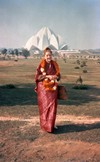
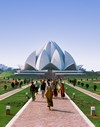





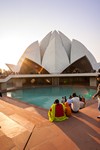

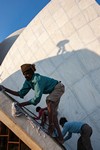
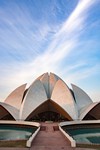







_100.jpg)